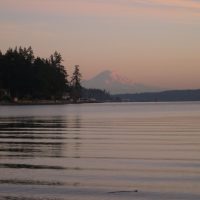Blakely Harbor Park
Head of Blakely Harbor. Closest cross streets: Blakely Avenue and 3-T Road.
A 40-acre passive use park located at the head of the beautiful Blakely Harbor. The park features a 1-mile loop trail, wildlife viewing platforms and seating, kayak storage location, meadow, and interpretive displays.
The park is located on the former site of Port Blakely Mill, one of the world’s largest sawmills in the late 1800’s. The mill closed over 70 years ago and nature has reclaimed much of the area making it uniquely suited for a waterfront park.
On December 15, 1999, the initial 20-acre parcel was purchased by the Bainbridge Island Park District from Port Blakely Tree Farms, following several years of negotiations by the Bainbridge Island Land Trust, the Park District, and other island volunteers to preserve this historically significant property. The purchase was made possible through a grant from the Recreation Conservation Office, $1 million raised through Land Trust volunteer fundraising efforts, and support from the City of Bainbridge Island and Kitsap County.
An additional 18 acres was purchased in November 2001, increasing the total Blakely Harbor Park acreage to 40 acres.
A 7-acre portion of Blakely Harbor Park was once the site of a Japanese community, Yama, that was associated with Blakely’s lumber mill era. The Bainbridge Island Historical Society is currently working on a preservation plan for this historically and archaeologically significant portion of the park.
In November of 2019, the Park District installed a 65-foot-long footbridge across the opening to the mill pond, creating a 1-mile loop trail. Also added were wildlife viewing platforms and bench seating.
For more information on the Washington State Department of Ecology Blakely Harbor Tree Farm site investigation, as part of the state’s Puget Sound Initiative, click here.



